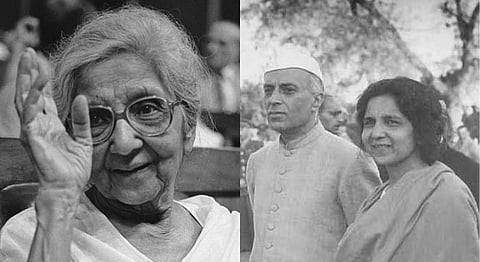
- HOMEGROWN WORLD
- #HGCREATORS
- #HGEXPLORE
- #HGVOICES
- #HGSHOP
- CAREERS
- ABOUT US
- CONTACT US

The history we learn is influenced by several factors. Renditions of the same tale present themselves in front of us and more often than not, we choose to believe what we want to. However, it is known that history, from its origin and across the world is gendered. The male bias is overt and for long it was believed as is, but no more.
The Indian independence movement was fuelled by several people and events. Most of what all of India remembers has to do with men and marches. Countless women contributed to the ever-important quest for independence from the British and yet we rarely see their names or applaud their laurels, for they simply do not exist in our history.
One such example is that of the Grand Old Lady of the Indian independence movement –– Aruna Asaf Ali. At the time, not many would have believed that women’s empowerment or providing women with their rightful agency is a tool imperative to the success of the movement but Aruna firmly believed so.
She was born in 1909 to Upendranath Ganguly and Ambalika Devi, who formed an upper-class Bengali Brahmo family. She denied the acceptance of religious intolerance held by her parents and society and tied the knot with Asaf Ali at the rather young age of 19.
An instance remembered about her is of her first arrest –– she went to jail during the Salt Satyagraha, and by this time, had already begun to gain popularity among the Indian masses. Even post the Gandhi-Irwin pact of 1931, which called for all political prisoners to be released, Aruna was denied bail by the British due to worries about her agitating people outside the jail. However, what the authorities had not realised is that Aruna had already empowered women enough for all the women inmates to reject their own releases as protest and stay in till Aruna was given bail.
Her efforts to mobilise Indians, and not just Indian men, continued for years but the most significant event took place in 1942. It is when the Indian National Congress launched the Quit India movement, which led to the arrest of many leaders including Nehru and Gandhi. Aruna bravely stepped in when no one expected her to and she herself unfurled the Indian flag at the Gowalia Tank Maidan in then Bombay. It became one of India’s most memorable visuals and deeply antagonised the British which led them to place a reward for her arrest but she succeeded in eluding them.
The intersection of the women’s rights movement and the Indian freedom struggle was marked by Aruna’s independent thoughts and subsequent actions. She viewed the exit of the British from India from a holistic perspective rather than one of force and male leadership. Even in times of turmoil, Aruna would push the women’s empowerment agenda based on the philosophy that without women, not much is possible, and rightly so. Gaining independence was a collaborative and co-dependent fight won by all Indians, not just male Indians.
Aruna Asaf Ali was a staunch supporter of the Quit India movement, a freedom righter, a radical thinker, a strong leader, and a woman. She garnered several accolades including the Lenin Peace Prize, the Bharat Ratna and the Padma Bhushan but her biggest achievements remain the ones whose impact can be seen today in the modern woman; a breadwinner, someone who defies patriarchal norms, or even someone who simply lives life on her own terms.
If you enjoyed reading this, we suggest you also read:
